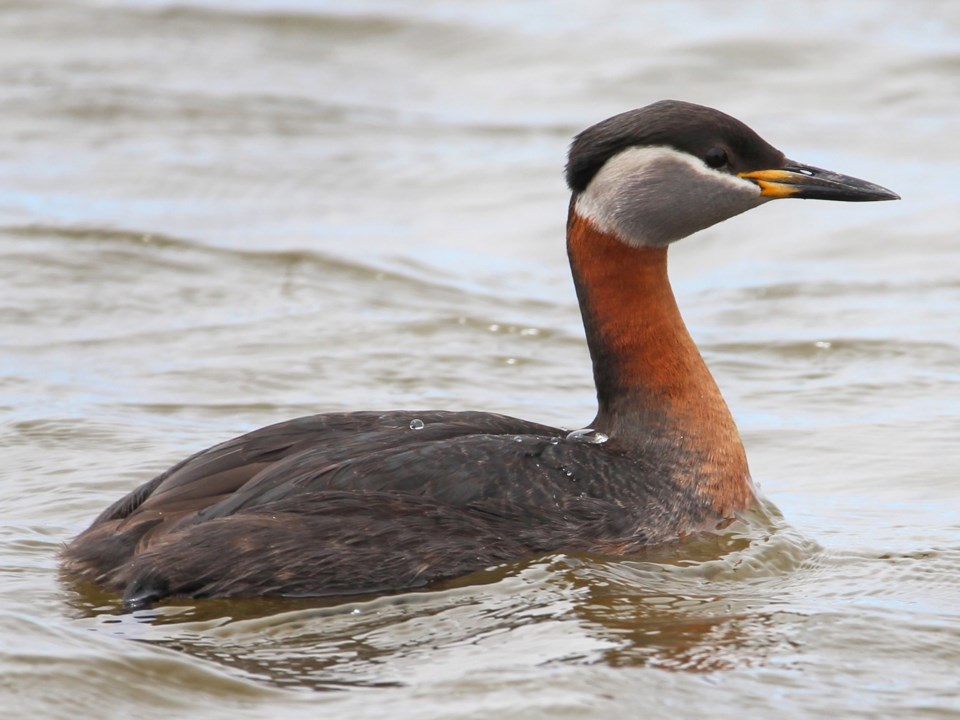The 2023 Christmas Bird Count in Guelph saw a record number of participants with some unusual bird sightings including a first for a migratory waterbird, the red-necked grebe.
According to Guelph’s Christmas Bird Count coordinator Mike Cadman, birds that usually fly south for the winter are staying for longer periods.
“The high counts in this year’s Christmas Bird Count were likely due to the very mild fall and the fact that all water was open, including Guelph Lake and the Speed and Eramosa rivers,” Cadman said.
“These conditions are becoming more regular as climate change affects our ecosystem, bringing about changes in the number of birds occurring in the Guelph area in the late fall and early winter period.”
Cadman says the bird count is a useful means of tracking patterns, that contributes to an understanding of the effects of the changing climate and other factors influencing bird numbers.
The 57th annual Christmas Bird Count took place on Dec. 17.
Despite steady light rain for most of the day, a record 87 participants reported 75 species, with a total of 17,676 birds sighted.
“This represents considerable increases over 2022 with 12,998, and 13,390 in 2021. The high bird numbers this year were largely due to unusually large numbers of Canada goose and other waterfowl, European starling, dark-eyed junco, pine siskin and American goldfinch,” Cadman said.
The bird count did include a few surprises this year.
“We had our very first red-necked grebe, which we’ve never had before. That is very exciting in some respects, but on the other hand, many of the results are tied into climate change, and it’s an El Nino year. So, in a way it is a bit disconcerting with bird sightings increasing the way they are, and that we are seeing more species. But on the other hand, as a birder, it is very exciting," Cadman said.
“Each year, there’s more and more of these unusual birds staying around. This year, it was a lot of waterfowl because the rivers and lakes were completely open. Birds just move wherever the conditions suit them. They like to stay as far north as they can, and if the conditions are suitable, they will do it.”
Record highs were set for red-breasted merganser (12, previous high 1), hooded merganser (38, previous high 31), great blue heron (14, previous high 13), eastern screech-owl (27, previous high 16), belted kingfisher (21, previous high 15), winter wren (12, previous high 10), northern cardinal (199, previous high 172) and the pine siskin. (798, previous high 562)
Other highlights include sandhill four cranes in the marsh north of Home Depot was the second highest total ever; 22 eastern bluebirds was the second highest total ever. More duck species were reported than usual, with redhead, greater scaup, as well as the long-tailed duck, northern pintail, green-winged teal, and gadwall among the less usual species.
Cadman says Christmas Bird Count results do matter from year to year.
“From a bird conservation point of view, it’s really valuable because it is the only survey that tells us anything about what’s happening this time of year,” Cadman said. “And with climate change, particularly in the more northern parts of the continent, the changes are more dramatic. So, the survey is representative of how climate change is affecting the whole environment and the ecosystem around us.”
Since 1900, the Christmas Bird Count is North America's longest-running citizen science project. Participants in more than 2,000 locations throughout the Western Hemisphere participate in the count each year.
Retired from a career in wildlife services, Cadman has been involved in the Guelph Christmas Bird Count since 1983.
Cadman encourages everyone to get involved with the annual Christmas Bird Count, whether they are avid birders or not.
“Every year, we help the scientific community learn about what is happening in bird populations,” Cadman said.
"I think that one of the main ambitions of humanity should be to live sustainably in relation to the natural world. To do that, we need to understand how we are affecting ecosystems and wildlife. The Christmas Bird Count contributes to that understanding, while being lots of fun to participate in. And that's why I'm glad to be a part of it."
The full list of results from the 2023 Christmas Bird Count can be found here.



